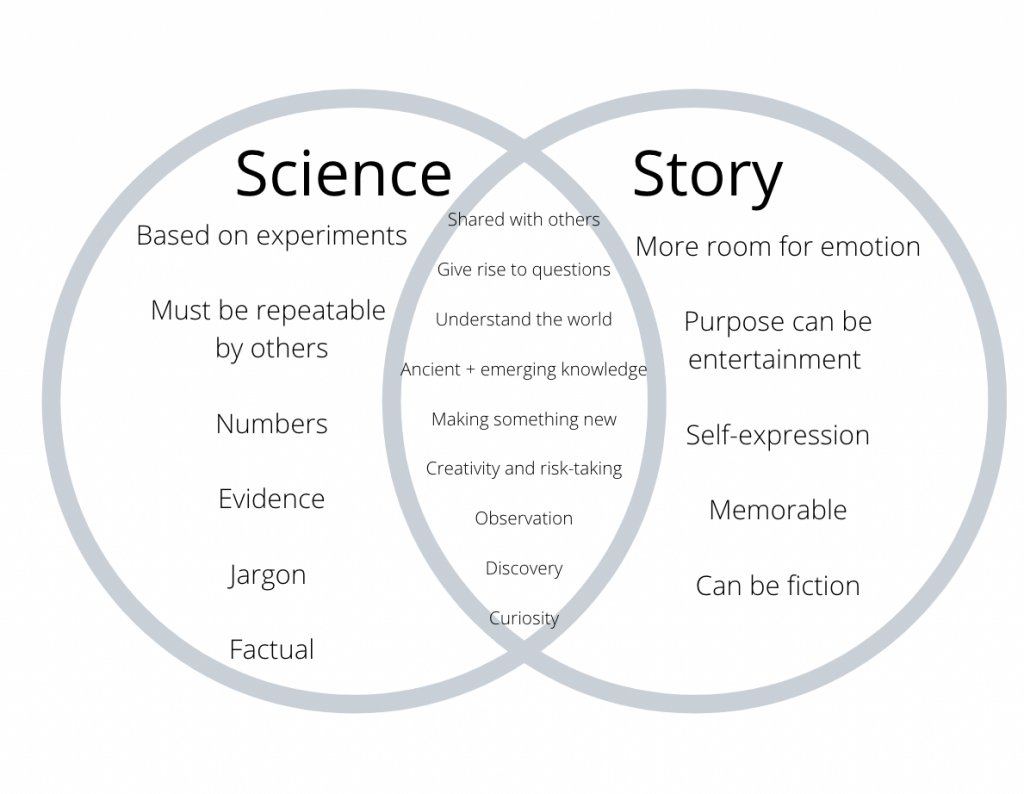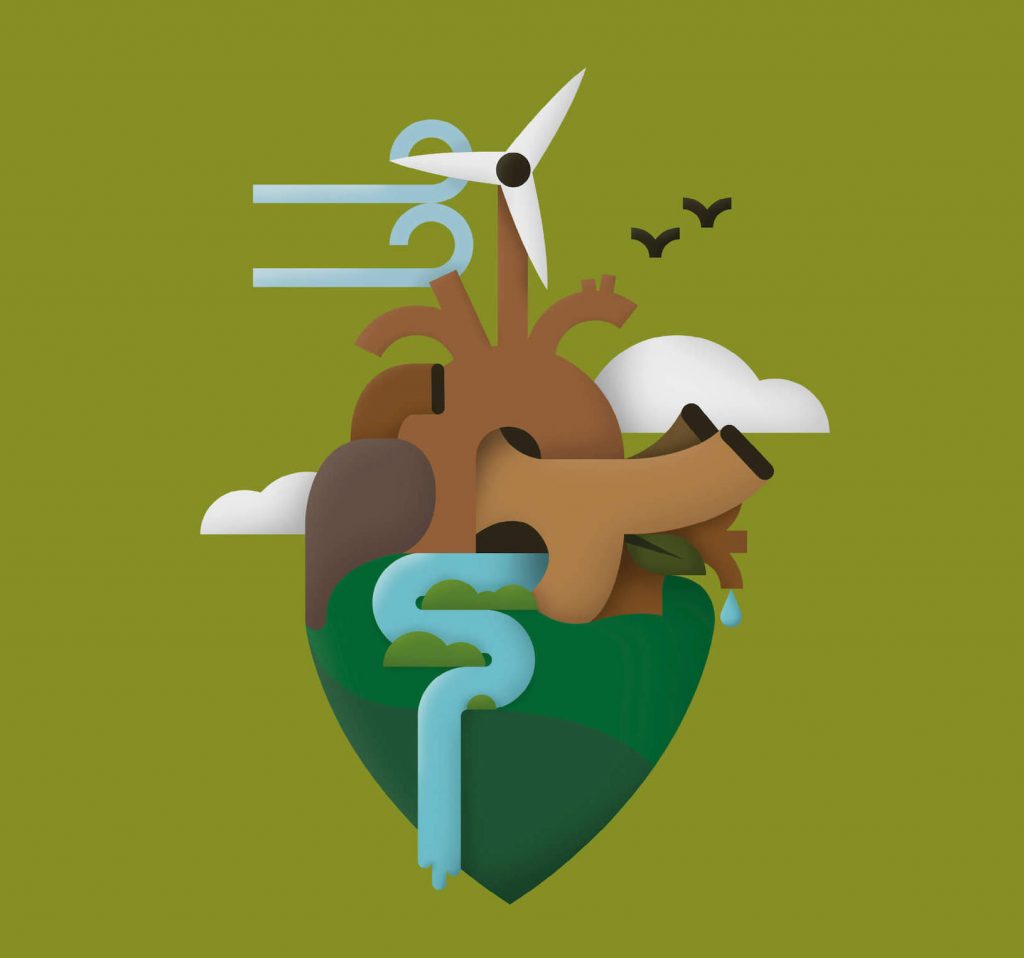Chapter 1: Science and Story
Science and Story
What do stories and science have in common? Do you believe that stories are important in science?
Scientists tell stories everyday. Their stories are backed by careful observation, experimentation and analysis. But they are still stories. They have a beginning, middle and an end. They tell us something about the world. They ask us to accept their results—and more importantly, they ask us to question their conclusions and continue the important work of scientific discourse and curiosity.
Science and Culture
In this interview excerpt, Artist and Astrophysicist Annette Lee talks about the overlaps between science and culture, as well as Indigenous ways of knowing:
This is a Venn diagram created by the students in LFS 150: Scholarly Writing and Argumentation in 2021. Do you agree with how they filled in the circles? What would you change?

References
Lee, Annette. Science and Culture. [Video]. Descript. https://share.descript.com/view/RogFg61ue8I?t=2.945
Media Attributions
- Do it From the Heart © Héctor Expósito Rodríguez adapted by Lindsay Cuff is licensed under a CC BY-NC-SA (Attribution NonCommercial ShareAlike) license
- Science and Story Comparison © Joanne Choi is licensed under a Public Domain license
The cognitive process of studying constituent parts to demonstrate an interpretation of a larger whole.
The way scientists construct knowledge through testing hypotheses and communicating results—agreeing, disagreeing and adding to our knowledge of the world.


